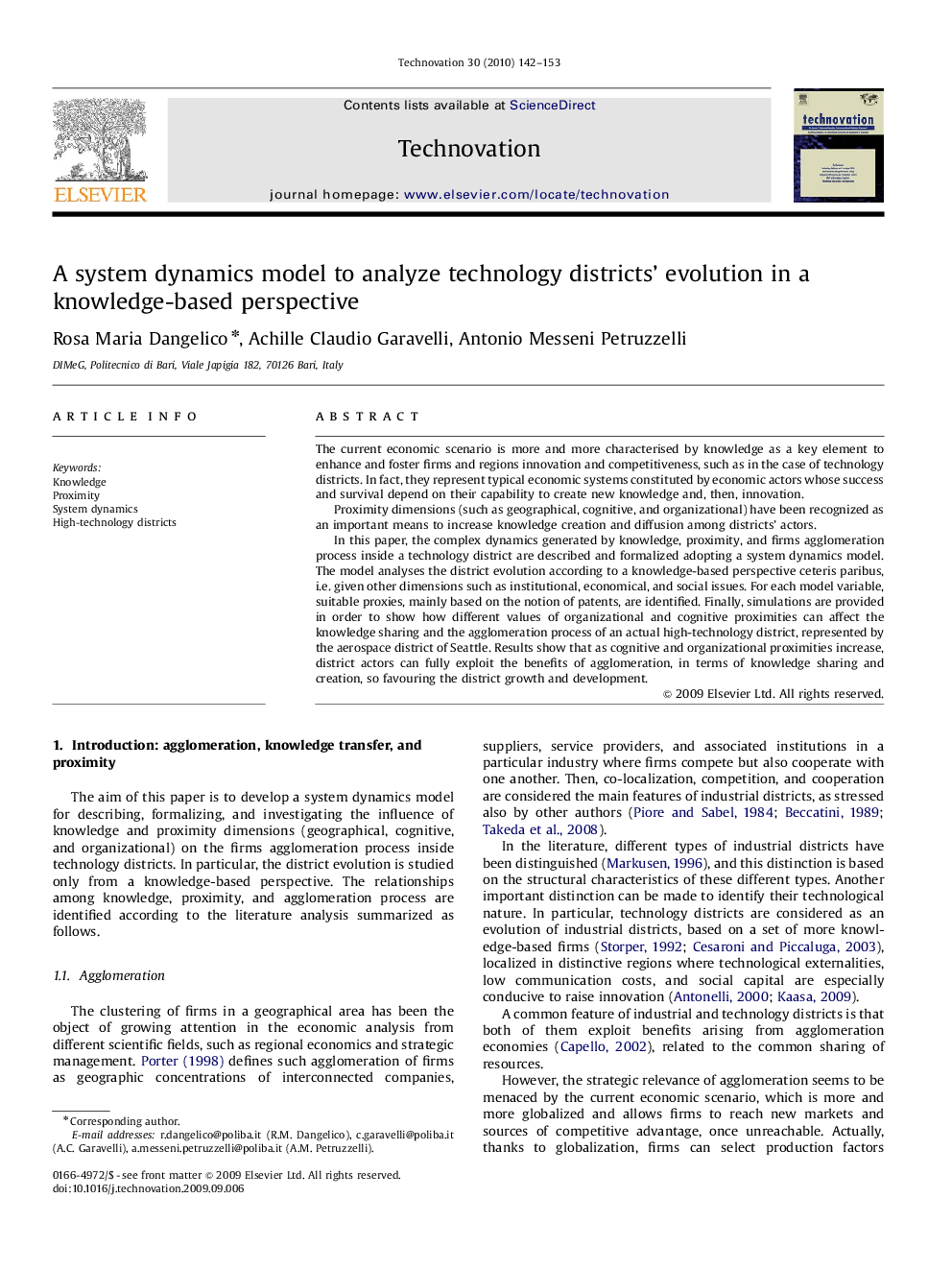| Article ID | Journal | Published Year | Pages | File Type |
|---|---|---|---|---|
| 1022338 | Technovation | 2010 | 12 Pages |
The current economic scenario is more and more characterised by knowledge as a key element to enhance and foster firms and regions innovation and competitiveness, such as in the case of technology districts. In fact, they represent typical economic systems constituted by economic actors whose success and survival depend on their capability to create new knowledge and, then, innovation.Proximity dimensions (such as geographical, cognitive, and organizational) have been recognized as an important means to increase knowledge creation and diffusion among districts’ actors.In this paper, the complex dynamics generated by knowledge, proximity, and firms agglomeration process inside a technology district are described and formalized adopting a system dynamics model. The model analyses the district evolution according to a knowledge-based perspective ceteris paribus, i.e. given other dimensions such as institutional, economical, and social issues. For each model variable, suitable proxies, mainly based on the notion of patents, are identified. Finally, simulations are provided in order to show how different values of organizational and cognitive proximities can affect the knowledge sharing and the agglomeration process of an actual high-technology district, represented by the aerospace district of Seattle. Results show that as cognitive and organizational proximities increase, district actors can fully exploit the benefits of agglomeration, in terms of knowledge sharing and creation, so favouring the district growth and development.
